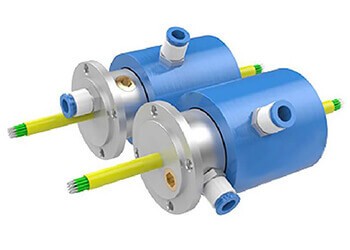What are Electrical Slip Rings and Collecting Rings?
Electrical slip rings and collecting rings are components used in electrical engineering and robotics to transmit power or data signals between two rotating parts. They are used in applications such as electric motors, generators, and wind turbines.
Materials and Tools Needed
To make an electrical slip ring or collecting ring, you will need the following materials and tools: copper wire, wire cutters, soldering iron, heat shrink tubing, electrical tape, and a drill.
Steps to Making an Electrical Slip Ring
- Cut the copper wire to the desired length. Make sure the wire is long enough to wrap around the circumference of the rotating part.
- Solder the ends of the wire together to form a loop.
- Drill a hole in the center of the loop. This hole will be used to attach the slip ring to the rotating part.
- Slide a piece of heat shrink tubing over the loop and shrink it with a heat gun.
- Wrap the loop with electrical tape to protect it from the elements.
Steps to Making a Collecting Ring
- Cut the copper wire to the desired length. Make sure the wire is long enough to wrap around the circumference of the rotating part.
- Solder the ends of the wire together to form a loop.
- Drill two holes in the center of the loop. These holes will be used to attach the collecting ring to the rotating part.
- Slide a piece of heat shrink tubing over the loop and shrink it with a heat gun.
- Wrap the loop with electrical tape to protect it from the elements.
Making electrical slip rings and collecting rings is a simple process that requires only a few materials and tools. With the right materials and tools, you can easily make these components for your electrical engineering and robotics projects.
See What We Can Do

